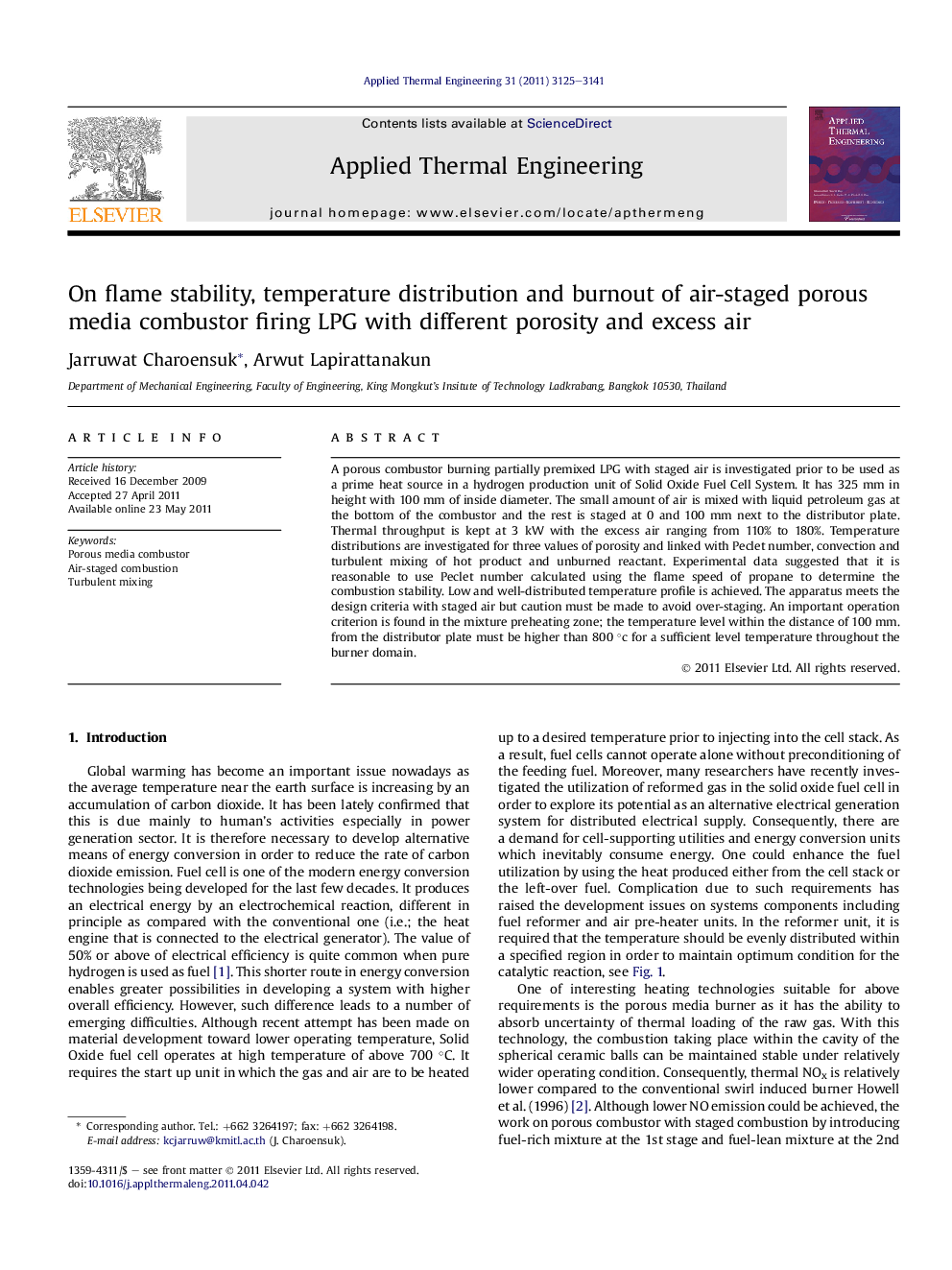| Article ID | Journal | Published Year | Pages | File Type |
|---|---|---|---|---|
| 647648 | Applied Thermal Engineering | 2011 | 17 Pages |
A porous combustor burning partially premixed LPG with staged air is investigated prior to be used as a prime heat source in a hydrogen production unit of Solid Oxide Fuel Cell System. It has 325 mm in height with 100 mm of inside diameter. The small amount of air is mixed with liquid petroleum gas at the bottom of the combustor and the rest is staged at 0 and 100 mm next to the distributor plate. Thermal throughput is kept at 3 kW with the excess air ranging from 110% to 180%. Temperature distributions are investigated for three values of porosity and linked with Peclet number, convection and turbulent mixing of hot product and unburned reactant. Experimental data suggested that it is reasonable to use Peclet number calculated using the flame speed of propane to determine the combustion stability. Low and well-distributed temperature profile is achieved. The apparatus meets the design criteria with staged air but caution must be made to avoid over-staging. An important operation criterion is found in the mixture preheating zone; the temperature level within the distance of 100 mm. from the distributor plate must be higher than 800 °c for a sufficient level temperature throughout the burner domain.
► The thermo-chemical process has been explained in conjunction with turbulent intensity within the porous domain. ► The flame speed of propane, which is adopted for calculation of Peclet number, can satisfactorily determine the stability of flame inside the porous media. ► The temperature of the combustor should rise above 800 °C within 100 mm from the distributor plate in order to ensure high combustion efficiency for this particular combustor. ► Finally, the porous combustor has met the requirement as an indirect hydrogen production unit.
